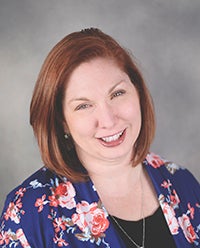Live United: Area food system is on the precipice of change
Published 8:45 pm Friday, June 25, 2021
|
Getting your Trinity Audio player ready...
|
Live United by Erin Haag
Like many parents, I read “The Hungry Caterpillar” to my children. It was so well loved in my home that we have a video of my daughter at age two telling us all she ate that day, in a sing song voice, punctuated with, “But I’m still hungry.” I didn’t realize until recently that the timeline was fairly reasonable for the transition from caterpillar to butterfly. How do I know all of this?

Erin Haag
Well, usually at this point I tell you what bits of wisdom my children imparted to me that day. This time though, there’s a rumor that you’ll see an article about monarch butterflies, showcasing the work of four children dedicated to saving the world one butterfly at a time. Two of those children belong to me, so I’ll let you read the article that’s going to make them famous and see for yourself what they’ve been up to.
You can’t talk about butterflies and not think about change, as cliché as it might be. As I soaked up a few minutes of sunshine on a swing, watching a butterfly climb out of its chrysalis, I thought about change and the incredibly hard work it takes to get there. It’s a lot of work to be a butterfly! The drastic change from egg to butterfly is a rapid one, occurring in two to three weeks at the most. If only we could see that kind of change and impact in our community that quickly.
I’ve talked the past year about our Pop-Up Pantries. In May, when I shared that the USDA formally ended the program, I promised that our work wasn’t done. Perhaps ironically, the work is being called, Food System Transformation. I can’t imagine a more fitting butterfly analogy reference than transform. That’s the fancy term though. We also call it, “Building the thing.” You know. The highly official thing. Yes, we smile and laugh when we say that in meetings, but it’s the catchphrase we all know.
What is the thing? The answer is we don’t know yet. First, we were in the caterpillar stage. Instead of eating, we are listening. There are conversations happening with small groups that are highly impacted by food insecurity. These people typically have low impact, but they’ve been given an opportunity to make their voices heard. There’s nothing worse than barging in and fixing a problem that didn’t exist in the first place, and ignoring the problems that really were there.
To keep in line with my analogy, we’re in the process of hanging in J position. The chrysalis isn’t built yet, but it’s coming.
Who is we? If you’ve followed along with the Pop-Up Pantry journey, you know that Channel One Regional Food Bank was an incredible partner for UWFC to work with. Over the past year, UWFC built a solid relationship with them, reworking the local Nutritional Assistance Program for Seniors (NAPS) format and learning about best practices in the hunger relief field.
There’s another partner in this work. I first met Kate Burgraff, executive director of Foundation For Essential Needs (FFEN) in February 2020. We met at a training unrelated to food relief, and went to lunch and hit it off. I credit Kate with sparking my passion for learning about different models of food relief programs, and how to offer clients dignity and choice.
FFEN is a statewide organization that focuses on helping food shelves with a client-centered approach. FFEN can assist food shelves with the logistics of a food shelf design, addressing issues of space and equipment. There’s a fascinating food source analysis that helps food shelf managers make data driven decisions on what to buy and when, thus ensuring less food waste. There are grant writing services, and funds available for equipment.
The best part? It’s free for food shelves to take advantage of this resource.
This week, Joellen from Channel One, and Kate and Katie from FFEN and I went on a tour of the food shelves in our county. By the end of the afternoon, I was worn out and inspired at the same time. Listening to the challenges our food shelves have, and watching the magic happen of conversations, dreaming and “what if” reminded me of sitting on the porch swing watching the caterpillars and butterflies.
I want to be clear that while UWFC is involved in the process, it’s being driven by Channel One. My job is to listen, to learn and to be the connector for Channel One to reach other people to listen and learn from. The people that are right here in Freeborn County, utilizing our food shelves. It’s our seniors who need a low sodium diet, and our neighbors who don’t have transportation to get to the food shelf. It’s the challenge of space, of equipment and the availability of volunteers. It’s their turn to talk, and our turn to listen, and that’s what we’re doing.
Out of those conversations, we trust that there will be common themes that emerge and we can funnel that into the key “thing” and build the solution.
We’re on the precipice of change here. In a year, it’ll be fun to look back and see where it started — over lunch in early 2020 — to a food system that better serves the needs of hungry people in our county.
For now, there’s no immediate call to action for this particular project. Throughout the summer though, I hope to write a series of articles that highlight our food resources and the struggles they face. There are several myths surrounding food shelves, and it’s our time to educate, to listen and to learn. Sometimes to Live United means we need to listen.
Erin Haag is the executive director of the United Way of Freeborn County.

